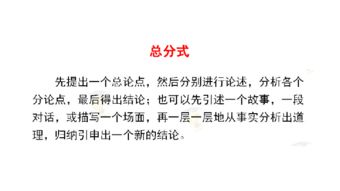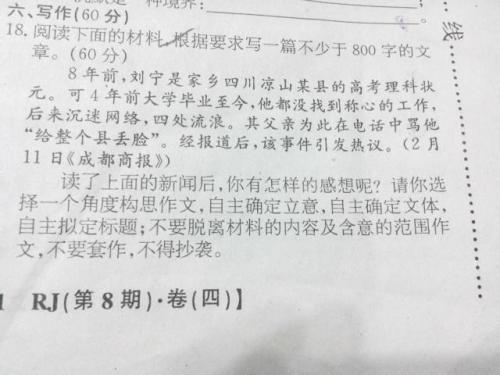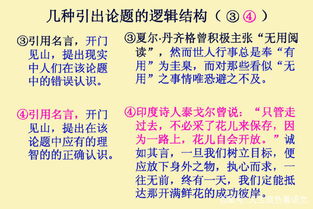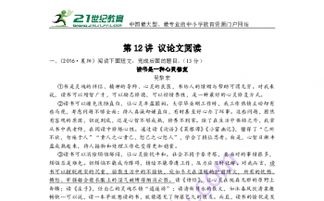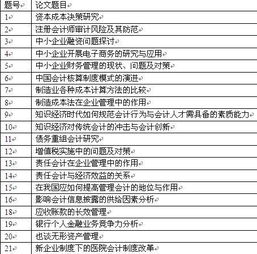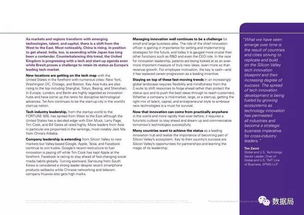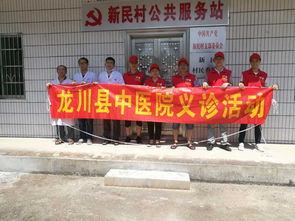1.求助英文翻译一下房地产论文的摘要,多谢了!
The real estate negotiable securities are the international financedevelopment major tendency, also is the market economy developmentinevitable result. The real estate negotiable securities will be animportant reform direction, it in the real estate investment,financing, the sale will act the strong character. The real estatenegotiable securities are lower the fluidity, the non- negotiablesecurities shape real estate investment directly transform as thecapital market in the negotiable securities property financialtransaction process, thus causes between the investor and theinvestment object relations has by the direct real right transformsthe negotiable securities form which has for the creditor's rights.Its connotation request is carries on the low cost for the financialorgan to finance and to increase the property fluidity and thesecurity, satisfies the organization and individual investor to thenegotiable securities investment demand.。
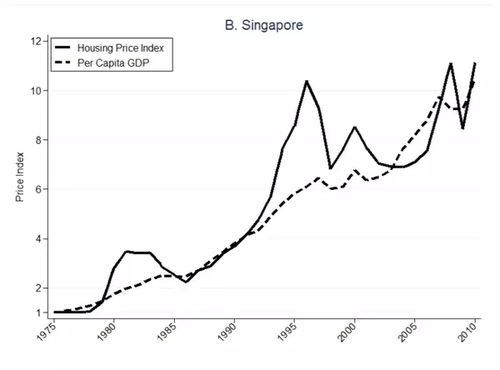
2.我国房地产价格上涨与供求之间的关系急需2000字论文一篇就两天时?
前天看了CCTV经济频道最近一期《对话》栏目——《对话:解读中国宏观经济形势》。
现在,从一个工薪阶层的角度,我的观点总结如下: 1、GDP将会以10%左右的速度持续5年左右 谢局长认为,11。5%这个数字,是偏热而不是过热,他认为是正常的。
个人观点: 城市化进程波澜壮阔,每年新增的城市人口接近2千万,需求强劲! 劳动力成本会持续低廉,谢局长说,给你八百,你不干,但是有人愿意干!这个就是中国目前的现实。 [ 转自铁血社区 ] 同意经济增长仍然将保持这样的增长率一段更长的时间,谢局长的意思是4到5年;而是不是正常的我认为不好说。
但是,它肯定会牵扯和扩大某些发展的不均衡,诸如经济结构的偏颇,贫富差距,物价上涨,房价飞涨,以及经济之外的社会文化发展相对滞后,社会观念动荡等等。 举个例子,刚进城的农民,以前给的是八百,现在物价涨了,但给他的还是八百,会不会有什么问题。
2、猪肉、粮食价格将会继续上涨 谢局长提醒大家,要有这类物价继续上涨的心理准备。 同时,通过谢局长和几位专家的进一步探讨,我们可以判断出:这类物价的上涨,供需是主因,但发起点是流通环节! [ 转自铁血社区 ] 至于这类物价上涨了,会不会让收购环节的农民受益,谢局长认为,农民不是傻子,他会到城里看价格,你不提价,他就不卖给你了。
个人观点: 看来现在的物价上涨,有较强的调控因素介入的痕迹。 但是上涨的幅度可以接受也可以承受,作为工薪阶层,为了农民兄弟着想,我个人认为是愿意做这个“牺牲”的! 至于对这个“牺牲”最终有多少能到达农民兄弟手中则持谨慎态度。
同时,我也对如何保障城市低收入工薪兄弟的生活水平不降低表示关注。 [ 转自铁血社区 ] 3、政策调控缺乏透明度和诚意,地产业对抗形成默契,房价将会持续高涨,并将由沿海蔓延到中部和西部 谢局长认为影响房价的2个最关键因素就是供求和成本,调控的关键就是控制资金链。
针对今年的房价高涨,嘉宾地产业孟总提出,宏观调控压缩投资,影响到了住房投资。例如控制了土地的供应和资金的供给。
谢局长表示今后会注意这个问题。并反问,是不是地产业存在控制盖房进度的问题,从而加剧了供求的不平衡,刺激房价高涨。
孟总明确表示,确有其事! 他认为全国三万五千多家开发企业,是分散的,不存在形成联盟的可能。 (既然这样,那就只能是默契了。)
[ 转自铁血社区 ] 他认为,从根本上,只有增加土地供给才能解决问题。同时,他也礼节性提到了调整住房供应结构,如低供房、保障性住房。
接着嘉宾石伊恩(欧洲白人),将住房问题的讨论从有限空间引向全局,显然,他认为调控局部房价高涨不但是不可能起作用的,甚至相反,他认为房价高涨将由沿海向中部、西部蔓延! 个人观点: 固定资产投资,政策调控有个“两门一槛”的说法,即,严把土地、信贷两个闸门和市场准入一个门槛。 但是,住房投资把土地,信贷两个这样一卡,不就是卡了供需的供方吗? 再把市场准入一卡,好了,地产商少了,竞争也少了。
[ 转自铁血社区 ] 简单的说,这样调控的话,个人认为是缺乏把房价涨幅降下来的诚意的。 再说下透明度。
首先就是成本的透明度,不需要透明太具体的,透明个行业的大概的数据,都知道的,商家跟别人谈价钱,底价被人了解,价格就不容易抬上去了。 然后还有个问题说下。
都知道一趟1000人的火车,2000人买,不过怎么调剂,总是只有1000个人买得到票。 但是,会不会,出现这样情况。
你提升了运力了,到1800了,可却只有1200人买到票?很明显了,有人占了2个以上的位置。 [ 转自铁血社区 ] 火车票的话,人人买得起。
可若是房子,那可能很多买了2个以上的,就要靠贷款了。 那,这个贷款,要不要控制住?不知道这个点,对于房价来说,是不是就是谢局长强调的资金链的那个关键点。
现在的城市里,极少见到流落街头的人吧,那说明大家还都是有地方住的,虽然合租的不少,但是空房子也着实为数不少吧! 最后说下经济适用房。 其一,可以看出,房地产商都不是很感兴趣;虽然很礼貌也会提到。
其二,你盖得少,能分到的只能是少数特殊关系人员和极少数特困人员,好像引起争持的反作用更大吧。 [ 转自铁血社区 ] 那就只能多盖,而且要大量十分的大,可是,这不是又回到供求上了吗?————还是要提高土地和信贷的供应。
(你供应少了,稀缺资源啊,人家房地产商当然不乐意浪费,对策自然而然就会出来了。) 。
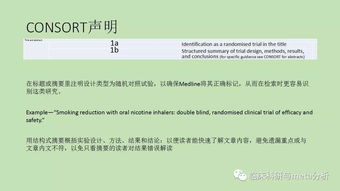
3.房地产论文
浅谈房地产项目的风险管理 风险是在特定的客观条件下,在特定的期间内,那些可能发生的结果之间的差异程度,实际上就是实际结果与计划结果的变动程度,这种变化程度越大,所谓的风险就越大。
房地产开发项目的风险,实际上是开发商实施开发过程中固有的风险,在现在的经济大环境中,主要表现在以下几个方面: 1、项目的定位风险。 房地产开发项目的市场定位包括项目的产品定位、建筑产品的质量定位、建设环境的品质定位,都是根据市场调查、项目的经济技术分析、项目可行性研究报告做出的,是指导项目决策、项目设计、项目营销策划方案等前期工作的依据。
可以说,项目的市场定位确定以后,基本上就敲定了项目的建设风格、建设成本、营销推广方案,就决定了项目的销售前景,一旦市场定位不准确,项目的指导思想出现失误,是后期无法或者是非常困难弥补的风险,也是项目开发过程中,最大的风险,属项目建设的决策性失误风险,按照风险影响范围划分属于总体风险(决策风险),从某种程度上讲,其结果也是不可管理风险。 2、项目的投资支持能力风险。
《项目可行性研究报告》出台前后,由于对市场定位的认识模糊或者自相矛盾;或者是没有真正做到“量体裁衣”、“量力而行”;或者是对企业资金筹措(自有资金)和融资能力过高地估计,或者项目成本分析存在着严重的失误;或者没有吃透国家和地方政府的行业政策,对大的经济环境把握的不准;或者是成本过程控制严重失控(突发性事件)、意外因素过多等等原因,导致的项目资金支付能力达不到计划要求,给项目建设造成的风险(可控制风险和决策风险)。 3、项目的质量风险。
包括:在项目决策阶段由于经济技术分析失误,出现品质与价格矛盾导致的质量问题;在设计阶段,向设计提出违反设计规范、标准,特别是强制性标准的要求,又通过“关系”关照通过造成的“投机性”质量问题;施工阶段,从业人员对设计知识认识有重大错误,擅自改变设计造成的质量风险;施工管理过程中,不重视关键部位和关键过程的跟踪检查处理,对一些容易出现影响结构安全,特别是一些虽不影响结构安全,但对正常使用功能有严重影响的问题,处理不及时,没有做到“事前”控制的“永久性缺陷”或者给售出交房后造成的质量“隐患”(实际上就是“质量通病”造成的纠纷);交房实物与销售承诺、广告宣传承诺不相符造成的“实物质量”问题等,因“质量”问题造成的纠纷冲突形成的风险(可控制风险)。 4、项目的合约履行能力风险。
在项目运作和建设过程中,涉及土地转让、融资、设计、监理、工程地质勘察、设计与勘察设计成果审核、招标代理、施工、材料设备供应、质量检测、销售委托、购房等合同或协议签约、履约过程,由于项目的一次性(不可重复性)特点,建设周期又比较长,涉及的方方面面又比较多,如果在关键的过程出现控制失误,那将给项目造成相当大的麻烦。 比如,在目前土地供应体制和贷款政策条件下,寻找土地、找寻资金是企业试图突出“瓶颈”制约的普遍方法,有时候在“饥不择食”的景况下,可能会因“省略过程”不慎跌入“陷阱”。
5、项目建设的 “创新”风险。当前的经济大环境,使项目建设的土地、资金条件比过去任何时候都显得更加重要,在有限资源的条件下,要使企业能够持续稳步发展,追求计划利润,获得既定利益是非常有必要的。
这种情形下,为了服务目的,追求项目与周边项目的“差异性”,选择自己企业不熟悉或者认识尚不足以完成追求的“创新”,也是极具风险的,更何况正常地创新本身就是有风险的。 6、项目的“政府”风险。
“政府”风险多发生在政策的不连续性、突变性和漏洞的存在,对于企业来说,主要发生在违规操作的投机性过程、对政策不理解的盲目性过程失误。 在项目建设过程中,企业必须掌握相关地法律为:《中华人民共和国建筑法》、《中华人民共和国合同法》、《中华人民共和国土地法》、《中华人民共和国招标投标法》、《中华人民共和国城市房地产法》、《中华人民共和国担保法》等;必须掌握地法规为:《建设工程质量管理条理》等。
必须掌握对于相关法律法规进行补充、操作的部门规章和规范性文件和强制性标准。 三、开发商项目风险管理的内容 风险管理是通过风险识别、风险评估、风险评价,并在此基础上优化组合各种风险管理技术,对风险实施有效控制和妥善处理风险导致后果,期望达到以最少成本获得最大安全保证的目标。
风险管理的主体是企业决策层,其核心是选择最佳风险技术管理的组合,目的是实现最大安全保障效能。因此,开发商风险管理的主要内容为: 1、合理界定项目覆盖的范围,加强对项目范围变动的控制,将项目的任务细分的更具体、更明确、更严密、更便于控制,以免遗漏而产生风险。
2、合理确定项目管理目标,在企业发展规划和战略的总体要求下,按照项目《经济技术分析报告》和《项目可行性研究报告》提供的依据,用科学的方法和态度进行项目决策,确定项目目标,避免出现决策失误风险。 3、编制《项目管理规划》,对项目工作进行结构分解,。
4.汉译英求助,请勿用google等翻译论文急用,谢谢~我国房地产 爱问知
China's real estate market developed rapidly in recent years。
Especially in recent years, in the development and at the same time also brought some questions。 House prices are rising so fast, the vacancy of the backlog of high house prices and severe, high in room area is easy to cause the bubble prices coexist。
Against the real estate market in China's sustainable healthy development。 Therefore, the Chinese government adopted a series of macroeconomic regulation and control policy, dynamics is very large, but the chongqing municipal government in housing property tax is taken, the macroeconomic regulation and control policy mainly to chongqing real estate in macroeconomic regulation。
Nowadays real estate tax, more than three months of chongqing real estate exactly what has been, this paper will affect this to study, so as to seek the conclusion accord with the objective reality。
5.怎样看待房价过高 英文论文
Why not only a market down:
1 wages for won't fall, because in the development of productive forces, along with a normal economic development, salary is as inflation, will also raise, salary has risen, house prices rose also calculate not down.
2 a series of national macro-control, the national concern is in the floating exchange rate system, the appreciation of the renminbi to import export country against, in order not to let the yuan rise too fast, so the country bought so many American Treasury bonds, stop the yuan appreciating too rapidly to our country export enterprise to bring more adverse effect, as the appreciation of the renminbi in local currency valuation of the real estate will rise, more hot money will go to the foreign investment appreciation of China's assets.
3 interest rates factors, we studied the interest rate is the important factor of affect capital flow, the two countries, a national interest rates high, a national interest rates low, interest rates low countries will be part of the capital inflows to countries with high interest rates LiXiCha show, everyone think after the financial crisis is added three national interest? Money in real estate is also very good investment.
4 interest rates bring exchange rate factor, the influx of money is the foreign currency into local currency, so push its currency to appreciate, as I just said its currency to appreciate how? In local currency appreciation of the real estate inevitable.
6.谁有房地产营销外文文献啊5000字左右
Real Estate of the Value of Real EstateFor a good or service to have value it must possess certain economic and legal characteristics, specifically the following: utility, scarcity, demand, and may be defined as the power of a good to render a service or fill a need. Utility must be present for a good or service to be of value. Utility, however, is only one of the characteristics that make up value. Thus where utility is present but demand or scarcity is absent, market value will not exist. For instance, water and air possess utility-yes, total utility, for both are essential to life itself. The value of neither air nor water however is measurable in terms of dollars for each is abundant and free to all. To have market value, therefore, a useful good or service must be scarce. The influence of utility on value, too, must be considered in relation to the size, shape, or form of the property, its geography or spatial location, and its mobility and availability at given times. Variations in utility characteristics influence value; value differences, therefore, are caused by form, space, or time utility, as the case may be.Scarcity is a relative term, and must be considered in relation to demand and supply and the alternate uses present or prospective " to which the good or service may be put Thus Christmas trees may be scarce the day before Christmas, and most房地产价值特性有价值的商品或劳务,它一定具备某些特定的经济和法律特征,尤其具有以下特征:效用性、稀缺性、需求性和可转移性。
效用是指一种商品提供服务和满足需要的能力。一种商品或劳务具有价值时,它一定有效用。
但效用仅是形成价值的特征之一。因此,只有效用而没有需求或稀缺性,也不具有市场价值。
如空气和水都有效用—是的,百分之百有用,因为他们都是生命所必需的。然而无论是空气还是水,都不能用金钱来衡量,因为它们都是充足的且人人可自由享用所以,有用的商品或劳务具有市场价值的同时,还必须是稀缺的。
同样,我们在考虑效用对于价值影响大小时,还要结合财产的大小、形状、形式、它的地理或空间位置及在特定时间的移动性和有效州。效用的特征的变化影响着价值,因此,由形式、空间或时效引起的价值差别,依具体情况而定。
稀缺性是个相对概念,应该结合需求与供给的情况以及两者交替使用情况—现在或将来—商品或劳务可能投放到哪一方来考虑。因此,圣诞节前一天的圣诞树会是稀缺的,而在接下米的一周却是最充足的。
故而其价值也会随之波动,金和银是相对稀缺的,但若发现新的矿源或能带来相同或更大效用的新材料,它们稀缺的程度和价值就会受到影响。在其他条件一样时,随着市场中商品和劳务稀缺的相对变化,其价值也会发生变化。
一般来讲,商品或劳务越是稀缺,其市场竞争越是激烈,其交易价格或市场价值通常就会越高。需求则是一个经济上的概念,它不仅表示需要,而且是有货币支付能力的需要。
仅凭有意购买者想或有需要,不管这种需要多么强烈都构不成需求。而要想实现后者,必须有购买能力才行。
建筑商、开发商和投资者尤其要牢牢记住需求的购买力。例如,大面积的房屋开发通常都是计划好、为满足长远需要而实施的.但却因没能准确考虑预期租户的有效购买力而以投资失败告终。
宾馆、娱乐中心和大型的商业项目投资失败的概率之所以很高,往往是因为没能区分需要和需求,没能准确计算出客户的有效购买力。可转移性是和财产价值有关的一个法律概念。
即使商品成其他东西具有效用性、稀缺性和需求性,如果其不能整体或部分转移,仍然没有市场价值。以月亮为例,月亮有效用,又因是独一无二的而稀缺,如果能确定它的所有权和使用权就会有市场需求。
然而由于它的不可转移性使它始终不能成为商品。可转移性不一定单指物理上的移动,它可以囊括构成财产所有权的占有和控制权等。
广告—超凡购物合理的价位、优越的地理位置、完美的设计、融洽的社区精神和独特的装潢使本项目荣登榜首!以国内价格外销的公寓大楼。房屋开发五大特色超凡购物,按照纽约庭院风格规划设计。
富有艺术品位,设计内外完美。内设一个理想的俱乐部和一座大型购物中心。
本项目具有以下特色:·实力雄厚的投资商本工程主要由美国Davis有限公司和Ben公司投资。·美国理念超凡购物集美国和加拿大商城的最优秀设计于一体,六幢高级外销公寓大楼总面积500000平方米,内设由200家美式风格商店构成的购物中心、两幢豪华现代写字楼和一个五星级宾馆。
集居住、商业和旅游服务干一体. 中国机构及主要领导人资料。
有英文。.cn (munications-based process through which individuals and communities discover that existing and newly-identified needs and wants may be satisfied by the products and services of others.Marketing is defined by the American Marketing Association as the activity, set of institutions, and processes for creating, communicating, delivering, and exchanging offerings that have value for customers, clients, partners, and society at large. [1] The term developed from the original meaning which referred literally to going to market, as in shopping, or going to a market to buy or sell goods or services.Marketing practice tends to be seen as a creative industry, which includes advertising, distribution and selling. It is also concerned with anticipating the customers' future needs and wants, which are often discovered through market research. Seen from a systems point of view, sales process engineering views marketing as a set of processes that are interconnected and interdependent with other functions[2], whose methods can be improved using a variety of relatively new approaches.Marketing is influenced by many of the social sciences, particularly psychology, sociology, and economics. Anthropology and neuroscience are also small but growing influences. Market research underpins these activities. Through advertising, it is also related to many of the creative arts. The marketing literature is also infamous for re-inventing itself and its vocabulary according to the times and the culture.Contents [hide]1 Four Ps 2 Product 2.1 Branding 3 Marketing communications 3.1 Advertising 3.1.1 Functions and advantages of successful advertising 3.1.2 Objectives 3.1.3 Requirements of a good advertisement 3.1.4 Eight steps in an advertising campaign 3.2 Personal sales 3.3 Sales promotion 3.4 Marketing Public Relations (MPR) 4 Customer focus 5 Product focus 6 Areas of marketing specialization 7 See also 8 Related lists 9 References 10 Further reading 11 External links [edit] Four PsMain article: Marketing mixIn the early 1960s, Professor Neil Borden at Harvard Business School identified a number of company performance actions that can influence the consumer decision to purchase goods or services. Borden suggested that all those actions of the company represented a “Marketing Mix”. Professor E. Jerome McCarthy, also at the Harvard Business School in the early 1960s, suggested that the Marketing Mix contained 4 elements: product, price, place and promotion.Product: The product aspects of marketing deal with the specifications of the actual goods or services, and how it relates to the end-user's needs and wants. The scope of a product generally includes supporting elements such as warranties, guarantees, and support. Pricing: This refers to the process of setting a price for a product, including discounts. The price need not be monetary; it can simply be what is exchanged for the product or services, e.g. time, energy, or attention. Methods of setting prices optimally are in the domain of pricing science. Placement (or distribution): refers to how the product gets to the customer; for example, point-of-sale placement or retailing. This third P has also sometimes been called Place, referring to the channel by which a product or service is sold (e.g. online vs. retail), which geographic region or industry, to which segment (young adults, families, business people), etc. also referring to how the environment in which the product is sold in can affect sales. Promotion: This includes advertising, sales promotion, publicity, and personal selling. Branding refers to the various methods of promoting the product, brand, or company. These four elements are often referred to as the marketing mix,[3] which a marketer can use to craft a marketing plan.The four Ps model is most useful when marketing low value consumer products. Industrial products, services, high value consumer products require adjustments to this model. Services marketing must account for the unique nature of services.Industrial or B2B marketing must account for the long term contractual agreements that are typical in supply chain transactions. Relationship marketing attempts to do this by looking at marketing from a long term relationship perspective rather than individual transactions.As a counter to this, Morgan, in Riding the Waves of Change (Jossey-Bass, 1988), suggests that one of the greatest limitations of the 4 Ps approach "is that it unconsciously emphasizes the inside–out view (looking from the company outwards), whereas the essence of marketing should be the outside–in approach"。
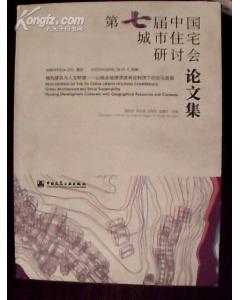

 100
100 2022-09-22 11:42
2022-09-22 11:42